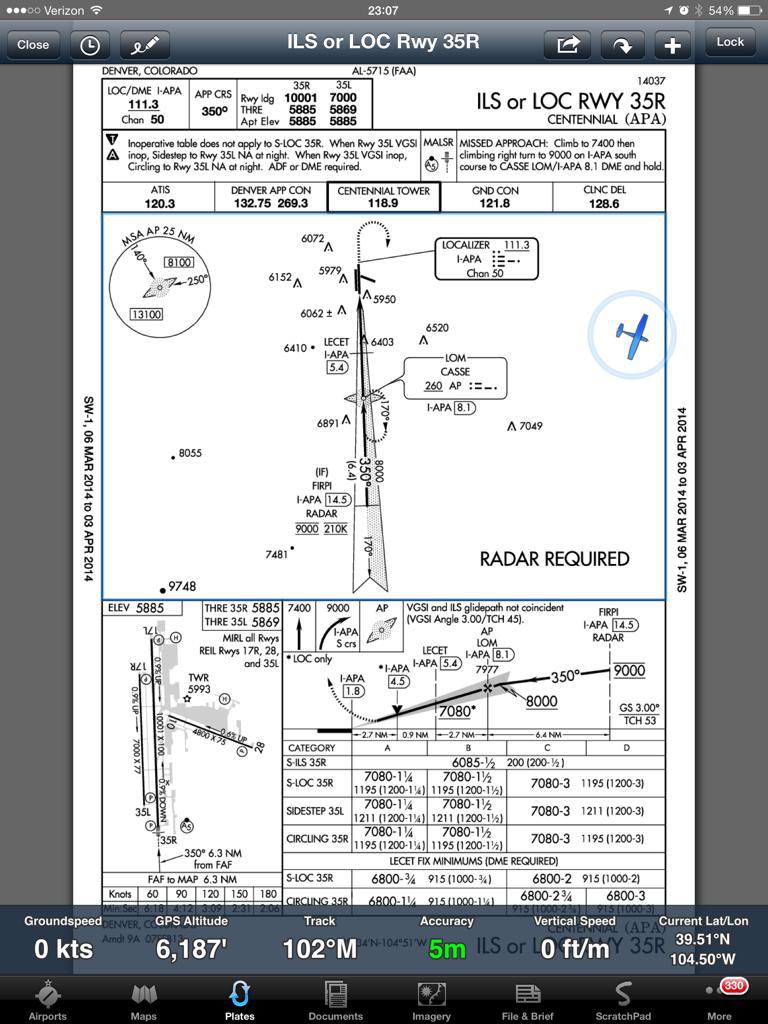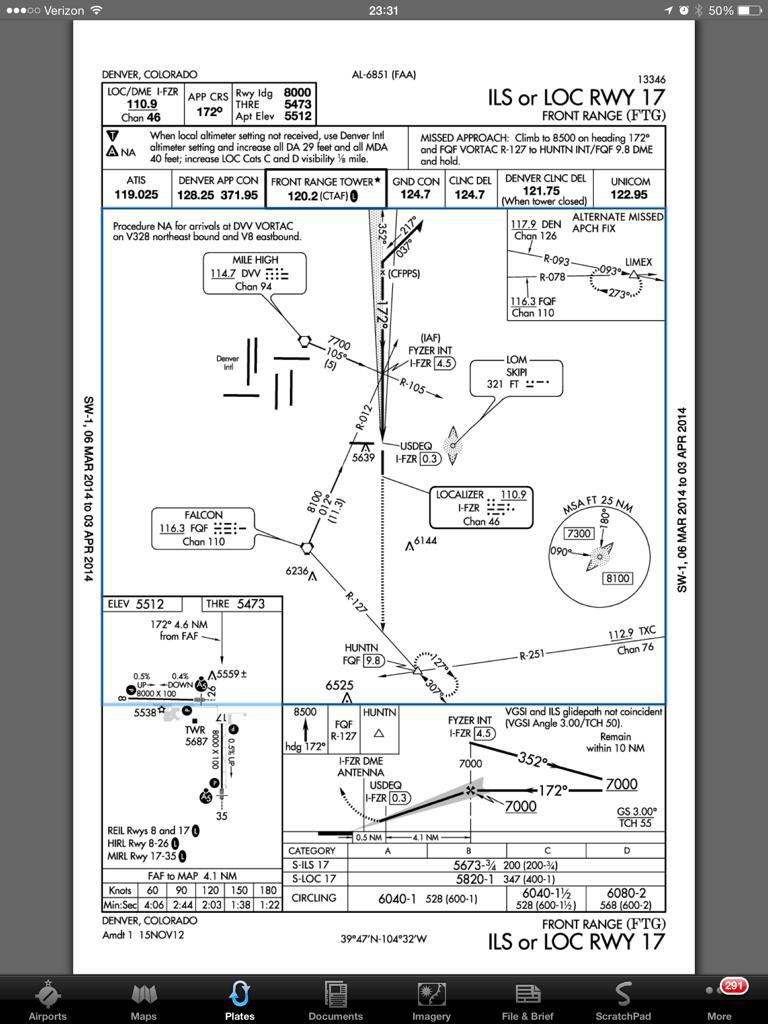The KAPA ILS or LOC 35R hasn't said "DME or ADF Required" for some time now. I posted about the changes to the plate a few times the year before last when they removed the only transition route for a /A equipped aircraft like mine, off of FQF, and left no legal way to navigate to the approach /A, without radar vectors.
They switched it to "RADAR Required" which effectively kills a NORDO approach with a /A aircraft, but makes more sense. Some of that may or may not have come about after I (and possibly others, I'm not looking for "credit") had a nice e-mail chat with the folks responsible for the plate updates that year. It took more than one e-mail to describe what /A meant to the official I was chatting with, sadly.
The focus of those plate updates was to add the new GPS approaches, and I think someone's head was squarely up and locked in GPS mode.
Not that I blame them, they were also laying in all of the new DEN fancy GPS glide path-based approaches and STARs and making sure none of the satellite airports interfered with those. Having an airplane wander over FQF and then turn toward KAPA wasn't really in the cards.
Hell, it confused DEN TRACON when I filed and flew it, as depicted. They asked when I could proceed "Centennial Direct". When I replied I was /A equipped, and couldn't proceed direct, but could accept a heading assignment, they grumbled and turned me. They didn't want me passing over FQF on my way to KAPA from the southeast.
It was CAVU and I could have cheated and used the heading on the "non-FAA approved" iPad, and my outside references and "situational awareness", but I wanted to see what they'd say. I was filed the legal way for my aircraft, including the transition route, and cleared "as filed" at the time. If they had sounded slammed, I'd have just said,"Cancel IFR" to help them out.
In KAPA's case, I think their traffic load is high enough that they don't want the possibility of trying to keep the entire approach corridor clear of traffic for a NORDO aircraft, and they don't want someone turning outbound head to head with the next inbound. Thus, "RADAR Required". Lose comm before you're established on the localizer, you have a different decision to make than how to navigate to the approach, going into KAPA in a /A aircraft. You're headed for your carefully chosen Alternate that has a legal way to navigate onto the final approach course.
KBJC had gone to "RADAR Required" years before KAPA did. I was kinda surprised it took as long as it did.
The one that absolutely floors me is the ILS or LOC 17 into KFTG. Imagine the weeping and gnashing of teeth (and instant request to change it, from the DEN tower chief, TRACON, and everyone else) if someone /A ever goes NORDO and was filed via FQF and then decides the wind is out of the south so they'll fly that approach not talking to DEN. There will be multiple controllers having kittens when the bugsmasher turns outbound toward FYZER and while they're dawdling through a 90 knot procedure turn only 5 miles from DVV.
Or better, they file the DANDD7 STAR to DVV and then go NORDO, landing KFTG.
Fun and games would ensue. Not much thought appears to where folks would be wandering if NORDO and arriving KFTG in general. Especially if they're making mistakes.
Most of those KFTG plates should have the "RADAR Required" added, not so much because the radar is really needed, but the Comm. Those published transition routes off of DVV are a really bad idea when viewed from a lost comm perspective. Wheeee... Let's go do procedure turns 5 miles off the DEN runaways! LOL.



